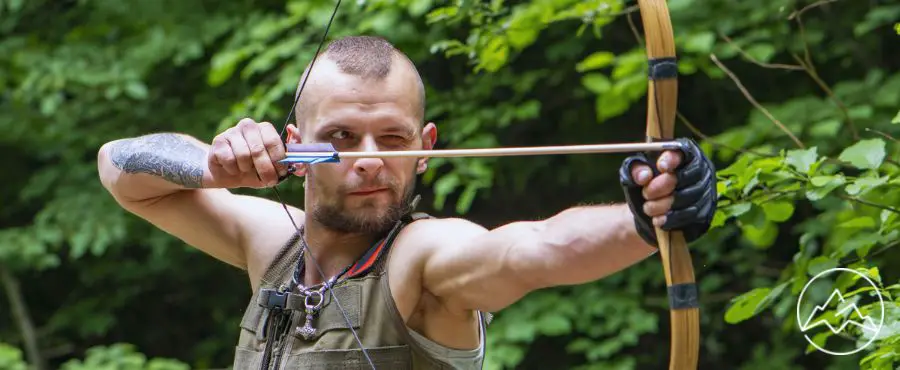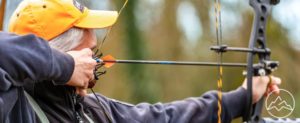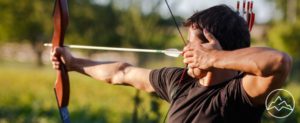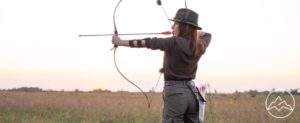In the realm of archery, back tension releases have become an indispensable tool for archers seeking to enhance their shooting abilities. These releases address the common challenges of target panic and poor form, offering a solution that promotes precision and accuracy. Unlike other bow releases, back tension releases provide archers with a surprise release mechanism, eliminating unwanted movements such as jerking or prematurely triggering the release. By doing so, they effectively reduce shot anticipation and target panic, allowing archers to concentrate on executing proper form and technique. Moreover, back tension releases encourage the development of proper back tension and emphasize the importance of form and aiming, minimizing user error and enabling novice archers to grasp the concept of a flawless shot. However, it is crucial to utilize these releases correctly in order to avoid injury and potential loss of arrows. While not commonly employed in hunting scenarios due to the need for precise shot timing control, back tension releases remain an invaluable asset for archers seeking to refine their shooting capabilities.
Key Takeaways
- Back tension releases help address target panic and improve control when shooting.
- They allow archers to focus on proper form and execution while preventing unwanted reactions.
- Back tension releases decrease shot anticipation and target panic, promoting better back tension and aiming.
- Incorrect use of a hinge release can lead to injury, so adjustments should be made for personalized use.
Why use it?
The use of a back tension release is essential for archers due to its ability to address target panic, improve form and accuracy, prevent unwanted movements, decrease shot anticipation, and promote proper back tension and focus on form and aiming. Back tension releases are particularly effective in improving shooting control by allowing archers to shoot without knowing exactly when the release will fire. This prevents unwanted reactions such as jerking, pulling, or punching the trigger, which can negatively impact accuracy. Furthermore, back tension releases help reduce target panic, a common issue among archers, by encouraging a surprise release and preventing the archer from anticipating the shot. By promoting proper back tension and focus on form and aiming, back tension releases enable archers to consistently execute more accurate shots.
Benefits and Advantages
One notable advantage of utilizing back tension releases is their ability to enhance an archer’s focus on proper form and execution, leading to improved accuracy and shot consistency. By removing the need for the archer to consciously control the release timing, back tension releases allow for a more natural and fluid shooting motion. This promotes a greater emphasis on maintaining consistent back tension throughout the shot process, which in turn helps to increase accuracy. Furthermore, the surprise release provided by back tension releases helps to eliminate any anticipation or flinching that may occur when using other types of releases. This improved shot control allows archers to maintain their aim and execute a smooth release, resulting in more precise and consistent shots. Overall, back tension releases play a crucial role in enhancing an archer’s accuracy and shot control.
Proper Technique
Utilizing proper technique when using a back tension release is crucial for achieving optimal shot control and accuracy. To practice proper technique, archers should start by positioning their hand on the handle of the release with a relaxed grip. The index finger should be placed on the back of the release hook, while the other fingers wrap around the handle. It is important to maintain a consistent anchor point and draw back using the back muscles, rather than the arm. As the archer reaches full draw, they should focus on maintaining tension in the back and slowly increasing it until the release fires. Common mistakes to avoid include gripping the release too tightly, flinching or jerking during the shot, and rushing the shot execution. By practicing proper technique, archers can improve their shot control, minimize errors, and enhance their overall accuracy.
Frequently Asked Questions
Are back tension releases suitable for all types of archery, including hunting and target shooting?
Back tension releases are suitable for all types of archery, including hunting and target shooting. However, there are differences between their usage in these two contexts. For beginners, back tension releases can be beneficial as they promote proper form, focus, and reduce user error. In hunting, back tension releases are not commonly used due to the need for shot timing control. While back tension releases can be adjusted for personalized use, it is crucial to use them correctly to avoid injury and premature fire.
Can back tension releases be adjusted for different levels of tension and sensitivity?
Back tension releases can indeed be adjusted for different levels of tension and sensitivity. These releases offer various tension settings that allow archers to customize the amount of force required to activate the release. Additionally, sensitivity adjustments can be made to fine-tune the release’s responsiveness. These features enable archers to find the optimal settings that suit their individual shooting style and preferences. By providing this level of adjustability, back tension releases enhance the archer’s control and precision during shooting.
Are there any safety precautions or risks associated with using a back tension release?
Safety precautions and risks associated with using a back tension release should be considered by archers. Potential risks include injury from incorrect use, such as hitting oneself or losing arrows due to premature firing. A loss of control can also pose a challenge for archers without a trigger. Additionally, some back tension releases have an audible click setting that may increase anxiety. It is important for archers to receive proper training and understand how to adjust the release for personalized use to minimize these risks.
Can beginner archers effectively use a back tension release, or is it more suitable for experienced archers?
Beginner archers can effectively use a back tension release, although it is more commonly used by experienced archers. Back tension releases require proper technique and understanding of shot execution. Beginner archers may benefit from using a back tension release to develop good form and accuracy from the start. However, it is important for beginners to receive proper instruction and guidance to ensure safe and effective use of the back tension release.
Are there any specific techniques or exercises that can help archers transition from using a traditional release to a back tension release?
Transition techniques and back tension release exercises can help archers effectively transition from using a traditional release to a back tension release. These techniques focus on developing proper form, control, and muscle memory. One technique involves using a clicker to help archers develop a consistent anchor point and release timing. Another exercise is the “blank bale” drill, where archers shoot at a close target without aiming, focusing on executing a smooth and controlled release. These techniques and exercises can aid in the successful transition to using a back tension release.
Conclusion
Back tension releases are indispensable for archers due to their ability to address target panic and improve form and accuracy. By allowing archers to shoot without knowing when the release will fire, these releases prevent unwanted movements and reduce shot anticipation. They also encourage proper back tension and focus on form and aiming, reducing user error. While incorrect use can lead to injury, when used correctly, back tension releases are a valuable tool for archers seeking to enhance their shooting capabilities. In the realm of archery, these releases act as a guiding light, illuminating the path towards precision and mastery.











